How To Make Duck Leg Confit And Preserve It Too!
Views: 328
Duck confit is a classic French dish where duck legs are cured in salt and spices, then slow-cooked submerged in duck fat until tender and flavorful. Once cooled, the meat is placed in a clean storage dish. Then, it gets completely covered in duck fat to preserve it for a period of time. Storing slow-cooked meat, such as duck confit in the fat creates an environment that hinders the growth of spoilage-causing microorganisms. The word “confit” comes from the French verb “confire,” which means to preserve. Both curing and storing in fat are intrinsic elements of this ancient preservation method. We explain in detail all the intricate steps required to make a proper confit in this post, or jump to the recipe of how to make duck confit legs.
How NOT to make duck confit
With the convenience of refrigeration, the traditional method of curing and submerging meat in fat for preservation is no longer a necessity. Nevertheless, the timeless appeal of melt-in-your-mouth duck legs confit persists. Some modern recipes try to expedite the confit process by omitting the curing step while still slow-cooking duck legs in duck fat. This results in tender, fat-poached duck legs. However, this dish is not confit. Let’s be clear, to make duck confit legs, you must cure the meat first.
How to cure duck legs for confit?
Generally, chefs recommend curing duck legs for 12 to 48 hours. Curing requires you to coat duck legs in a mixture of salt, herbs, and sometimes other aromatics, allowing the flavors to penetrate the meat while also acting as a preservative. Additionally, there’s a debate on how much salt to use in the curing mix. Unsurprisingly, recommendations vary widely, from 30% to as little as 3% of the duck’s weight. Figuring out the right amount is a matter of personal preference and common sense. Based on our tests, 1 ½ tablespoon of salt per two duck legs is enough.
Here’s a simple guide:
- Short Cure (12-24 hours):
- Yields a milder flavor and a less firm texture.
- Standard Cure (around 48 hours):
- Recommended for a balanced flavor infusion and texture development. Seasoned chefs, pun intended, say that 48 hours is mandatory to have salt-and-aromatics work their magic on the duck.
Whatever your choice, remember to refrigerate the duck during its curing. Once the curing is done, remember to thoroughly remove excess salt before starting the confit cooking process.
In our tests, a 48-hour cure resulted in a firmer texture, requiring extended oven time. Additionally, despite all our attempts to remove salt, the confit turned out saltier.
Oven temperature required to make duck confit
When it comes to choosing the oven temperature for duck confit, preferences among cooks may differ. Although the French suggest 70-80°C (158-175°F) and 8 hours of cooking time, our experience showed that this temperature resulted in tough duck legs even if cooked for an extra 2 hours. Consequently, we raised the heat to 93°C (200°F) for an additional 5 hours, and that did the trick! Since then, we have prepared duck leg confit at 200 °F. As it happens, if you’re using an electric oven, like we do, it doesn’t perform optimally at temperatures below 200°F. Some argue that modern ovens may not precisely register temperatures below 200°F. Whatever the case may be, we suggest sticking to 200 °F (93 °C).
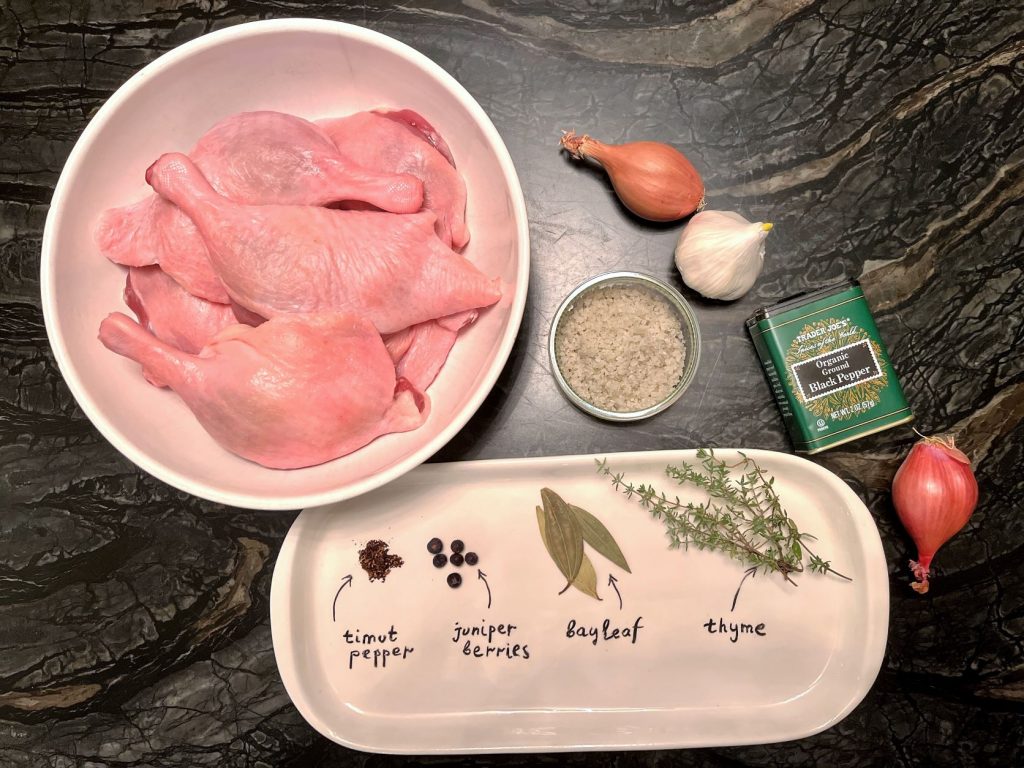
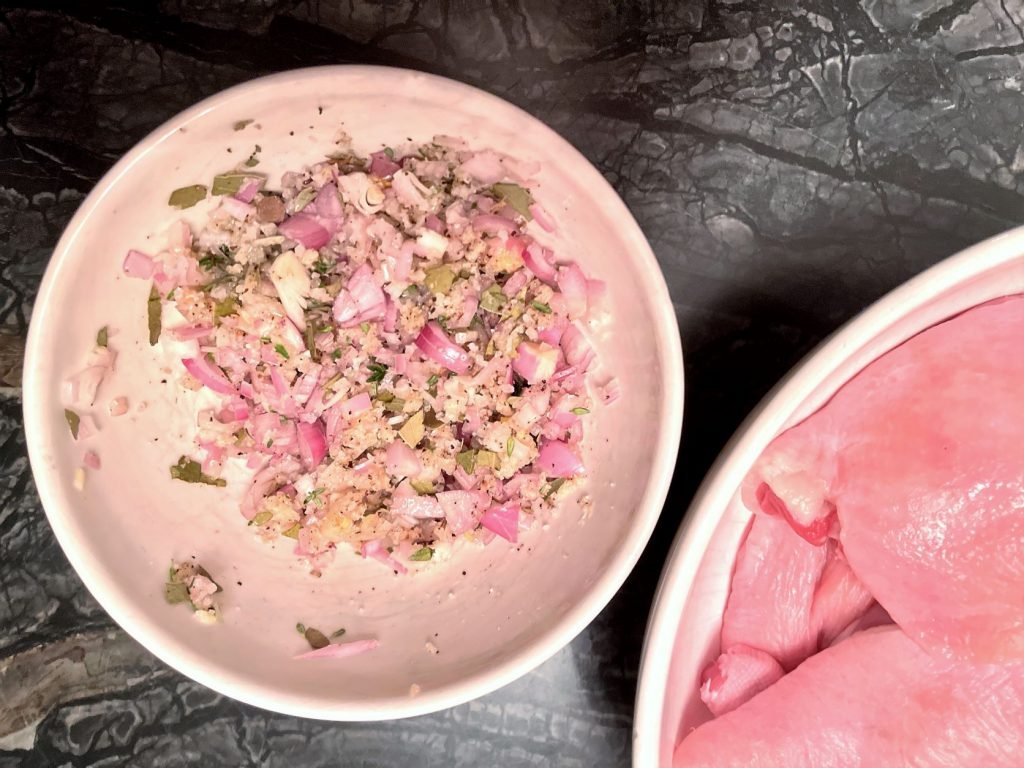
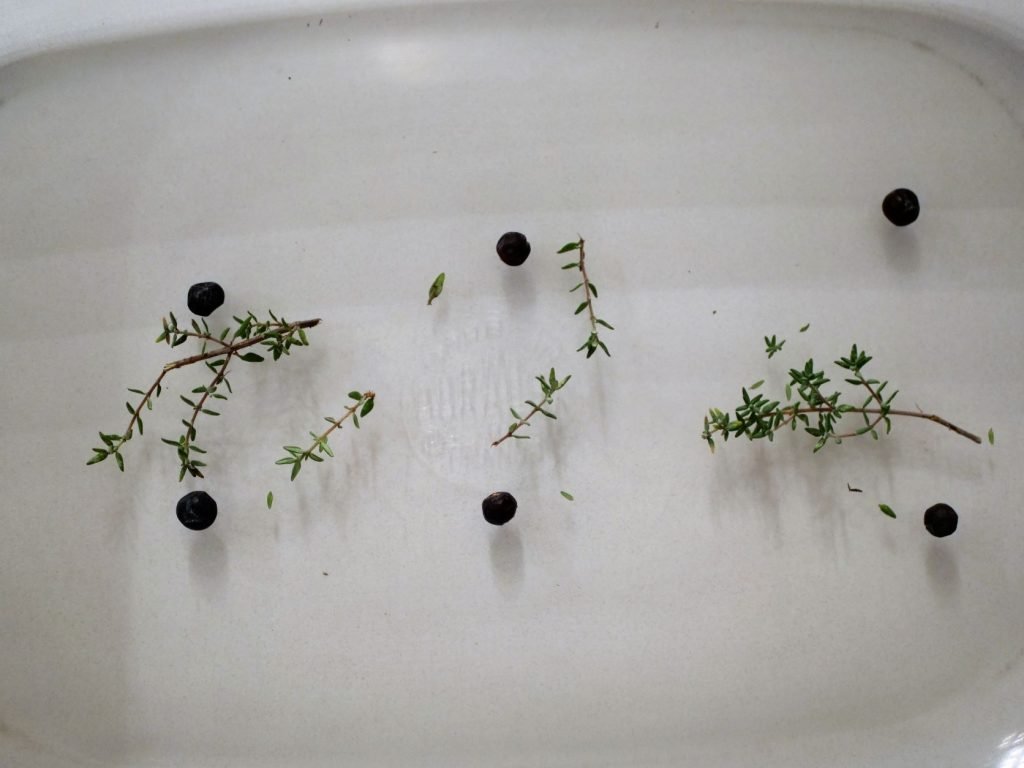
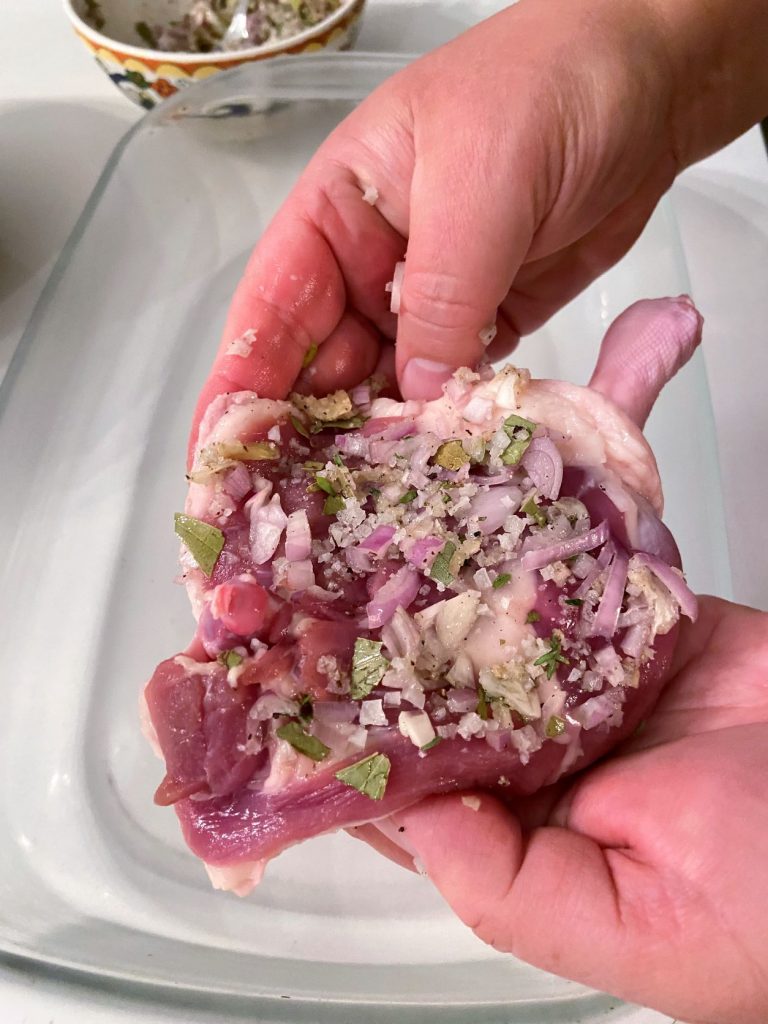
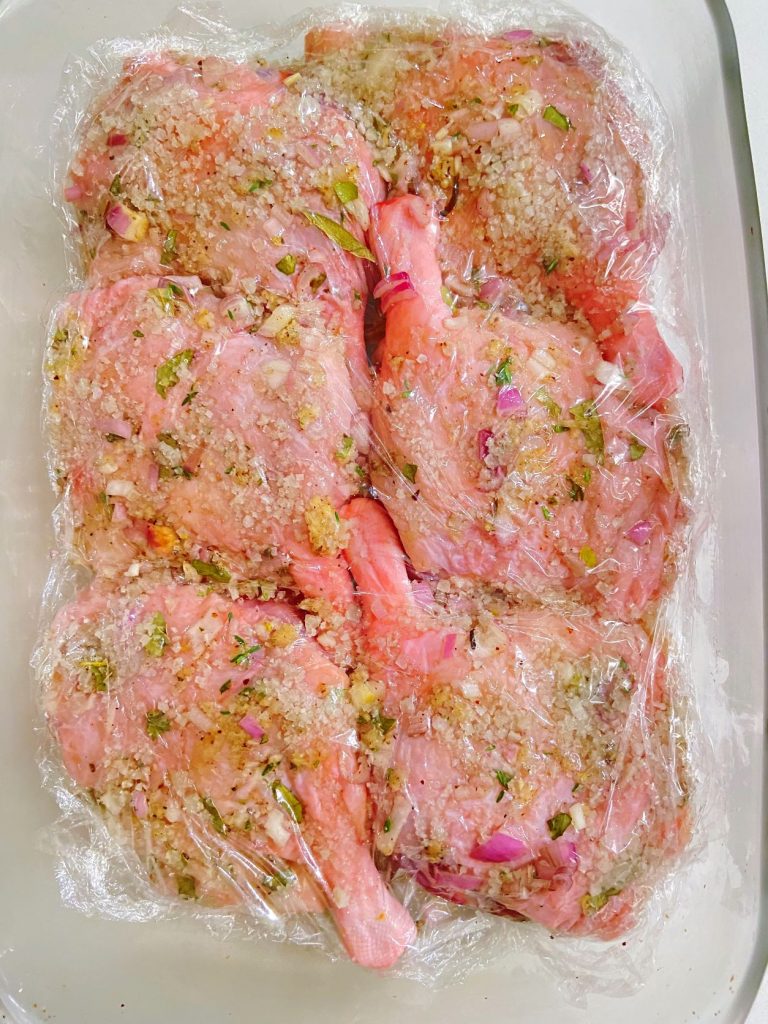
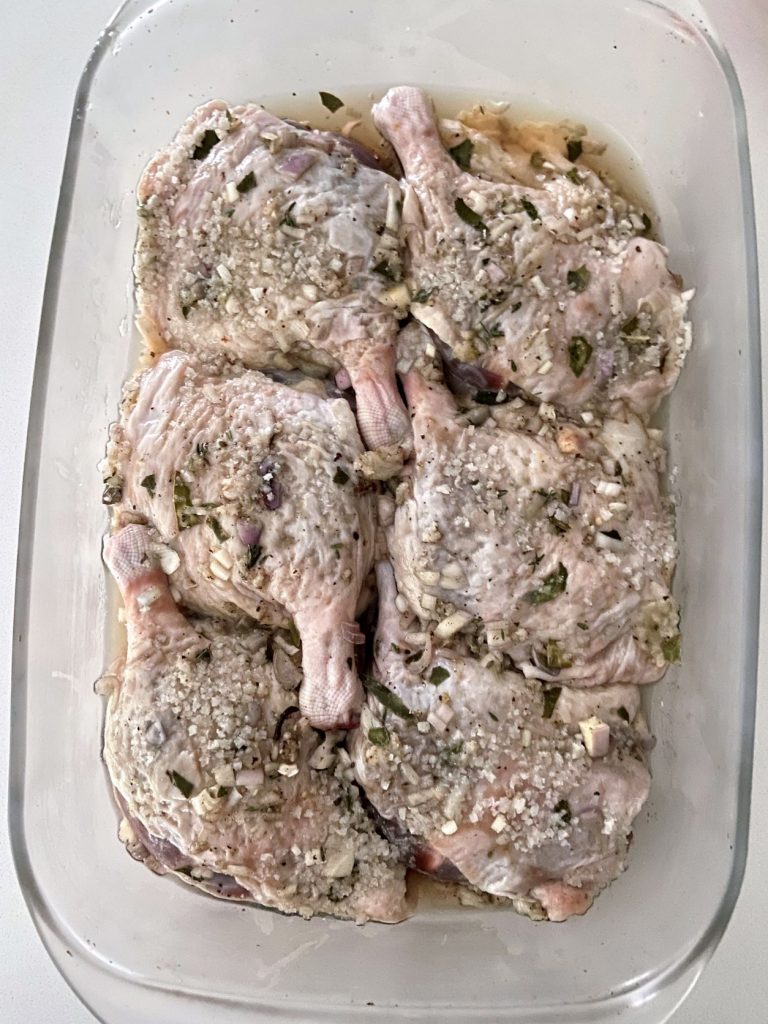
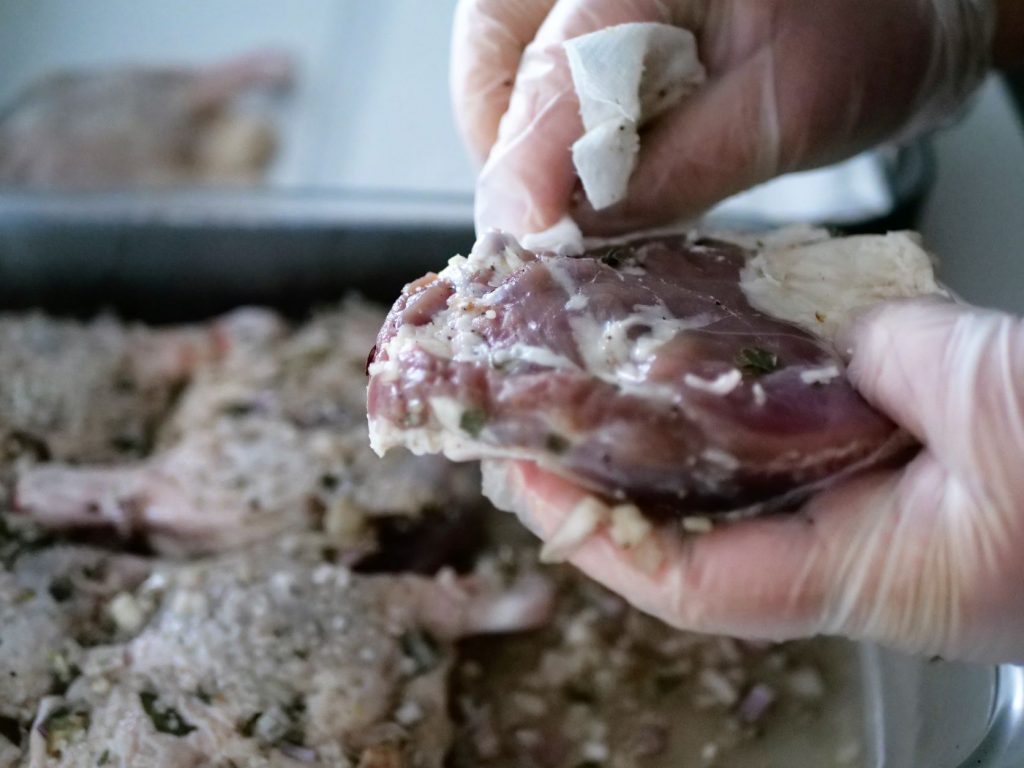
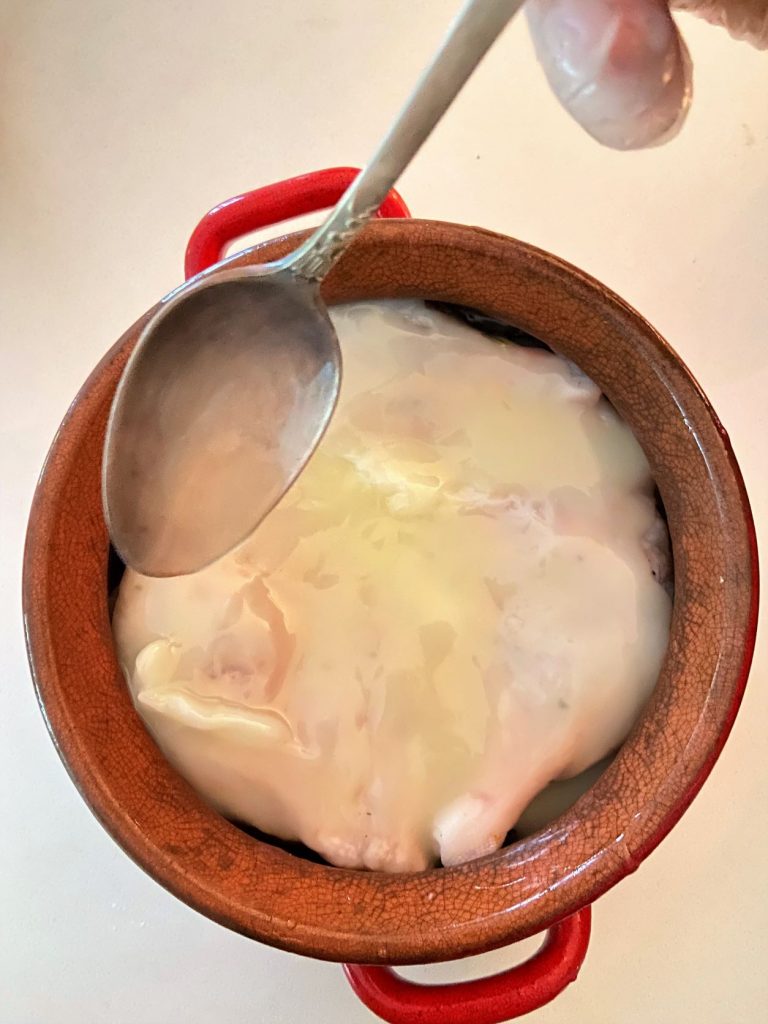
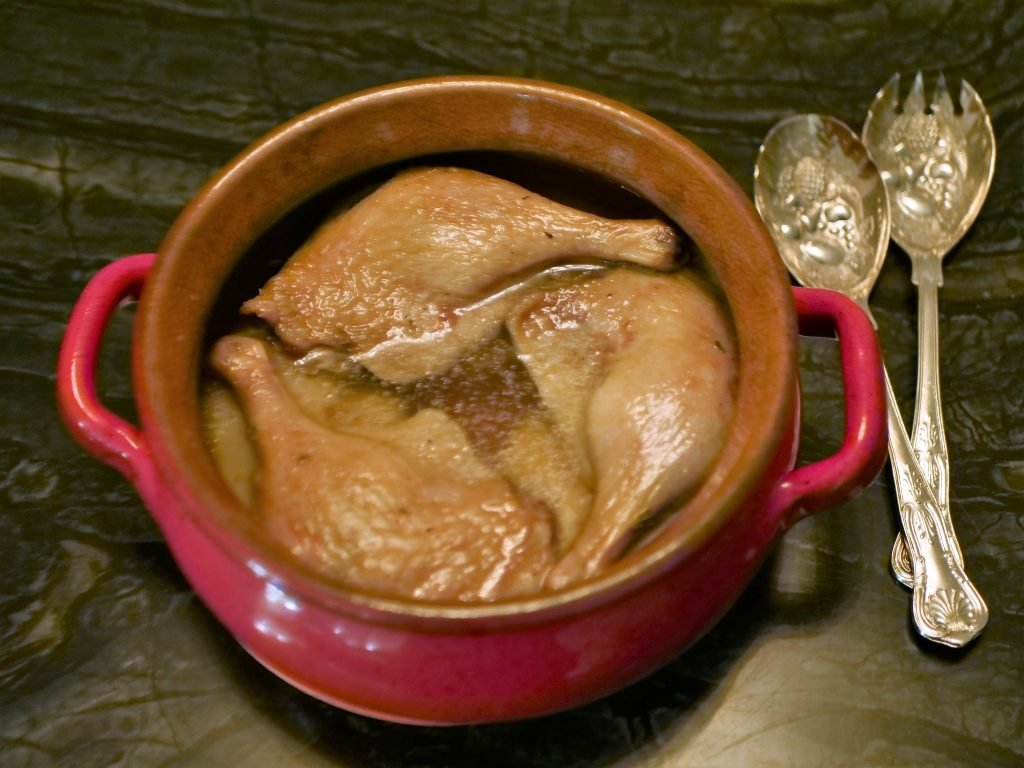
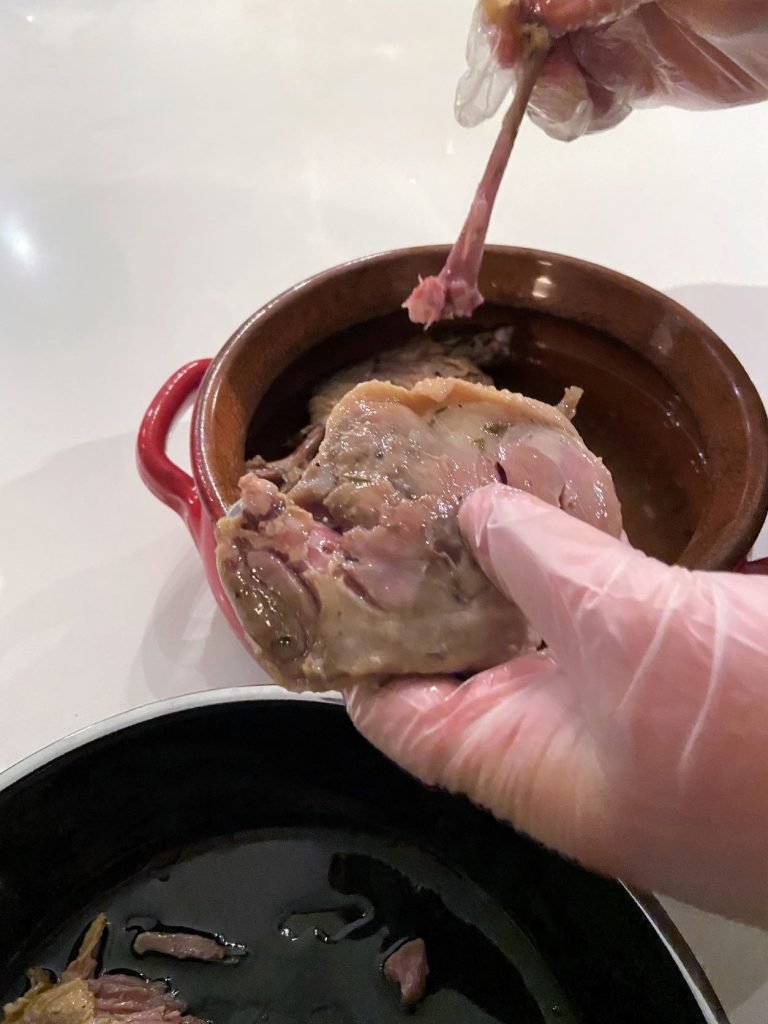

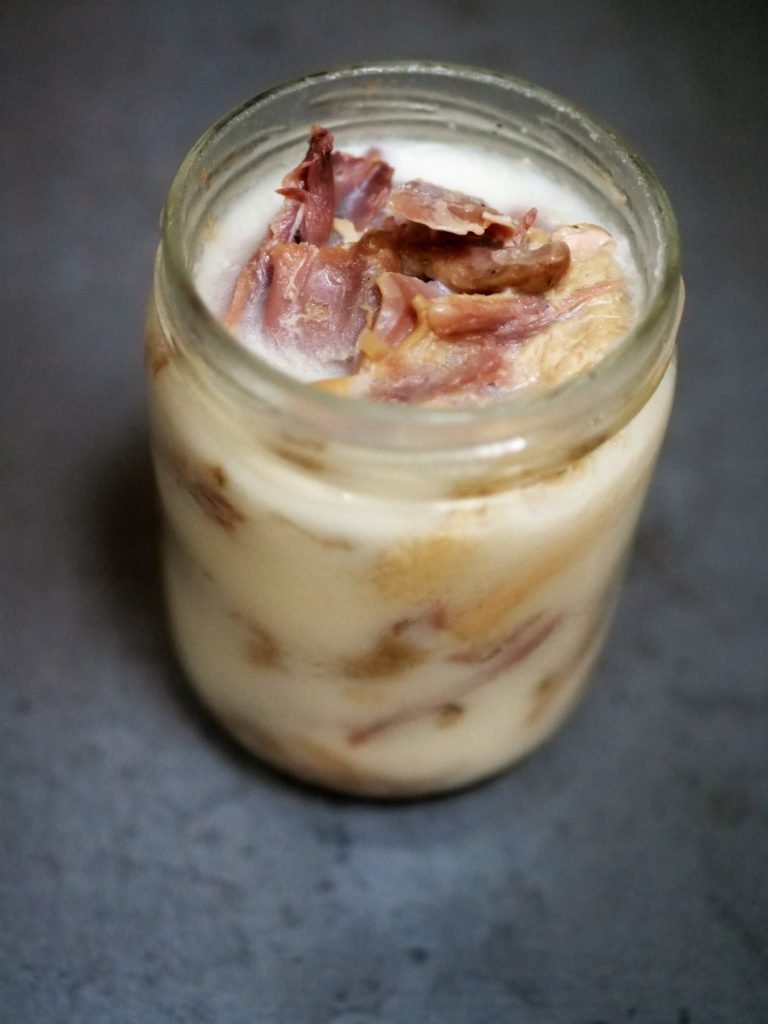
Tools and Equipment to use:
Recipe Card:
Duck confit recipe to enjoy now or preserve for later
Ingredients
- 6 duck legs
- 6 juniper berries
- 6 sprigs of thyme
- ½ tsp ground Timut pepper
- 3 bay leaves
- 2 shallots
- 4 cloves of garlic
- Black pepper ground, to taste
- 4 ½ tbsp salt
- ½ liter of duck fat or more if required 16 oz.
Instructions
Preparing duck legs for curing:
- Clean and wash duck legs thoroughly, ensuring they are free of feathers and other debris.
- Pat dry the duck legs.
Making curing mix and curing duck legs:
- Reserve juniper berries and place them with ½ of thyme sprigs at the bottom of a non-reactive utility dish.
- Grind spices, crush bay leaves and garlic, and finely dice shallot. Mix everything with salt.
- Rub ½ of the curing mix on the underside of duck legs. Place them, skin side up, in the dish. Massage the rest of the mix into the skin.
- Cover duck legs with cling film, ensuring there are no air bubbles underneath the film. Refrigerate for 12-24 hours.
- Remove legs from the cure, wipe off salt with paper towels, and set aside.
Making duck confit:
- Preheat the oven to 200 F (95 C)
- Start by melting enough duck fat to cover the duck legs completely. Make sure the fat is not hot but just lukewarm.
- Place duck legs, preferably in a single layer, into the casserole dish. If you need to place the meat in layers, spread additional fat in between the layers of the duck. Add more duck fat to cover the meat completely.
- Cover the dish with parchment or a lid and place it in the preheated oven.
- Slow-cook the duck legs for 6 hours. However, start checking at the 5-hour mark to make sure you do not overcook the duck legs. If necessary, cook for an additional 1+ hours, until the meat becomes tender and easily pulls away from the bone.
Cooling and Storage:
- Remove the dish from the oven and let the duck confit cool slightly.
- Promptly transfer the duck legs into your chosen storage dish. We prefer to remove the meat from the bone and store our duck confit in freezer-safe glass jars, but that’s just a matter of personal preference.
- Cover the duck confit completely with melted duck fat. You can use the fat from the cooking process, but be cautious because not all liquid in the casserole is pure fat. There's a substantial amount of cooking duck liquids that should not be used for preserving the duck.
- To use duck fat from the cooked duck leg, carefully spoon out or pour out just the translucent fat. Try not to shake the dish as it will make the fat mix with the duck cooking liquids.

- Allow the duck legs to cool in the fat.
- Once cooled, store the duck confit in the refrigerator. The fat will solidify and act as a natural preservative, keeping the duck flavorful.
Frequently asked questions
Can I use this confit duck leg recipe for making chicken confit or goose confit?
Yes, you can adapt a confit duck leg recipe to confit chicken or goose. The basic method of curing the meat in salt and aromatics, slow-cooking it in fat, and then preserving it in the rendered fat can be applied to various poultry, including chicken and goose. Keep in mind, that different types of poultry may require adjustments in cooking times and flavors. Feel free to experiment with various herbs and spices to tailor the confit to complement the specific taste of the poultry you choose.
Can I store the confit in a plastic container?
We strongly discourage the use of plastic containers for storing fatty dishes due to the potential risk of harmful elements leaching into the food. Plastic leaking can occur due to various factors, such as the type of plastic used, the temperature of the food, the duration of contact, and the presence of acidic or fatty substances in the food.
Can I substitute duck fat with something else in a confit duck leg recipe?
While duck fat is traditionally used in confit duck leg recipes, you can substitute it with other fats such as goose or chicken fat. However, be mindful that opting for these alternatives will alter the dish’s taste. Therefore, you should carefully consider your preferences when choosing a substitute.
How long can duck confit stay in the fridge?
Duck confit can last for several weeks when stored properly. The preservation achieved through the curing and slow-cooking process, followed by storing the duck legs submerged in their own fat, helps extend the shelf life.
Can you freeze duck confit?
Yes, you can freeze duck confit. Furthermore, if you are looking for longer storage for your duck confit, you should consider freezing as a storage option. Frozen duck confit can remain good for several months.
Can you confit duck in olive oil?
While some folks say you can confit duck in olive oil, we think, it might not be as awesome. Still, if you’re feeling adventurous and want to swap duck fat for olive oil after you dry-cure duck legs, we’re all ears for your cooking tales and how it turns out!
Why is my duck confit tough?
If your duck confit is turning out tough, there are a few potential reasons for this:
- Undercooking:
- By far, the most likely reason why your duck tastes tough is that the duck was not cooked long enough.
- Incorrect Cooking Temperature:
- Cooking at too high a temperature can also lead to toughness. Confit is traditionally slow-cooked at a low temperature. This method allows collagen to break down gradually. Make sure you are cooking the duck confit at the recommended low temperature (around 200°F or 95°C).
- Curing Time:
- The curing process is crucial for flavor and texture. If you cure duck legs for too long, the meat texture may suffer.
Can you overcook duck confit?
While duck confit is traditionally slow-cooked for 5-8 hours, it is possible to overcook it, which can result in overly tender or mushy meat. If the confit is cooked for too long or at too high a temperature, the meat may become overly soft and lose its desired texture.
To avoid overcooking your duck leg confit, periodically check the texture of the duck legs during the cooking process. The goal is tender meat that is still firm and not overly mushy.
If you notice that the duck is becoming too tender, you can adjust the cooking time accordingly. Shortening the cooking time can help prevent overcooking.
How to serve duck confit?
Duck confit can be served in various delicious ways. Here are a few suggestions:
- Classic Presentation:
- Serve the duck confit atop roast potatoes or alongside green leafy salad.
- For added texture, crisp up the duck skin by briefly roasting or pan-searing before serving.
- Sandwiches or Tacos:
- Shred the duck meat and use it as a filling for sandwiches or tacos. Add some pickled vegetables, greens, and your favorite condiments for a unique meal.
- Salads:
- Toss shredded chilled duck confit with mixed greens, dried fruits, nuts, and a vinaigrette for a hearty salad. The richness of the confit pairs well with the crispness of fresh greens.
- Pasta or Risotto:
- Incorporate duck confit into pasta dishes or risotto for a luxurious twist. Simply shred the duck meat and add to the finished risotto or pasta.
- Appetizers:
- Create appetizers like crostinis or sliders with small portions of duck confit. Top with chutney or caramelized onion for added flavor .
- Cassoulet:
- Incorporate duck confit into a classic cassoulet with white beans and sausage for a hearty, comforting dish.
Related recipes:

How To Render Duck Fat The Best Way
Rendered duck fat has a smooth and creamy texture. The use of duck fat is often associated with gourmet cooking and fine dining. Yes, rendering duck fat is easy, but do you do know the best way to do it? Find out how to render a high-quality duck fat at home while avoiding common pitfalls.

How To Make And Preserve Pork Lard And Lard Cracklings
Discover the simplicity of making snow-white odourless lard at home. Despite sounding complex, rendering pork fat is straightforward. The secret? Low and slow! Master the process with our step-by-step recipe.

How To Make Pork Confit And French-Style Rillettes
Here it is! The most decadent and simplest pork preserve recipe ever! Featuring a slab of pork shoulder slowly cooked in a warm blanket of pork lard, then shredded and preserved in even more lard. The result is the most tender and flavorful meat you’ve ever tried.





Leave a Reply